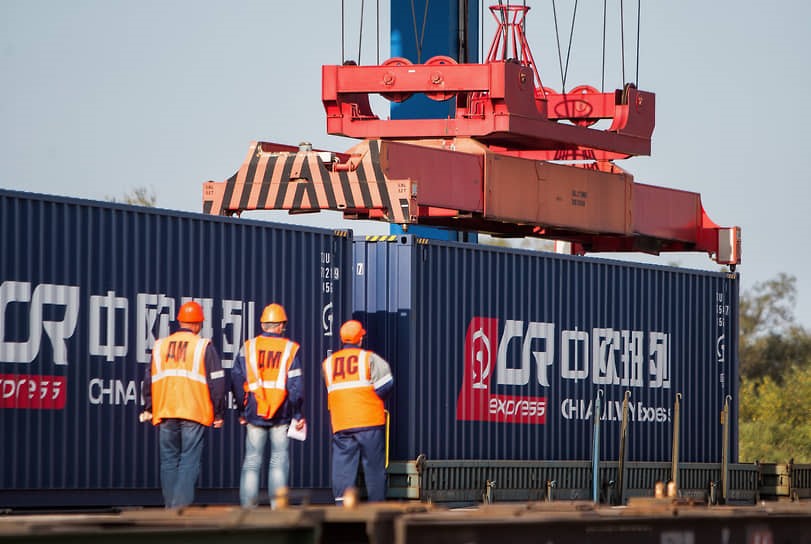The turn to the East: New trade routes between Eurasia and China
According to data from the Eurasia Development Bank (Eabr), the trade balance of Eurasian countries with China increased by 16% in the first ten months of 2023. While infrastructure is growing to strengthen open new corridors with Beijing, such as the Kazakhstan Bakhti-Ayagoz railway line that will offer a third major passage from China.
Moscow (AsiaNews) - The growth of trade towards the East is reshaping the economic and logistical panorama, even before the geopolitical one, in the dimension of Eurasia, no longer just a symbolic or ideological term, but a new continental reality in search of definition.
According to data from the Eurasian Development Bank (EABR), in the first ten months of 2023 the trade balance of Eurasian countries with China increased by 16%, reaching 277 billion dollars.
The reference is mainly to the countries of the Eurasian Economic Union (EAES), namely Russia, Belarus, Armenia, Kazakhstan and Kyrgyzstan, and primarily to Russia, although obviously it also concerns the other ex-Soviet countries (Georgia, Azerbaijan, Uzbekistan, Tajikistan and Turkmenistan) not separated by the new “Dnipro wall” caused by the war in Ukraine and Western sanctions.
The growth of import-export is reflected above all in new loading and transport routes, opening new routes and expanding existing ones, to compensate for those that have been interrupted or weakened.
In Russian this transformation is also called perestrojka maršrutov, the "restructuring of corridors", which is only at the beginning of its redefinition: initiatives concerning logistics are becoming more and more numerous and varied, investments are accumulating on the transit routes of goods , even before their diffusion in transnational markets.
The most favorable condition seems to be that of Kazakhstan, a relatively sparsely inhabited country yet rich in natural resources, but above all thanks to its immense territory which covers all the routes of the various Eurasian poles.
Eabr has published a report on "Eurasian infrastructure: short and long-term trends", from which the figures for increases in trade are obtained, which in 2023 exceed those of the year by more than 50 billion dollars. previous.
The most impressive turning point is certainly that of Russia, which has seen the doors of European markets closed, consequently impacting China. According to the Chinese customs office, trade between Moscow and Beijing increased by 26%, up to 240 billion dollars compared to 190 in 2022.
Loads of Russian foreign trade goods pass through the "eastern polygon", which unites the large railway routes of the Trans-Siberian and the Baikal-Amur (Bam) line, also increasingly activating Russian ports on the far-eastern coasts, which are also in need of ever wider and more effective rail connections.
In various locations it is necessary to open land transits that more easily connect the port structures, with a process of modernization of the entire area and related services, with a prospect of adaptation which according to the ongoing projects should reach the desired standards by 2035, as stated in a report by the Russian newspaper Kommersant.
2024 is emerging as the crucial year for the effective start of this Eurasian perestroika, after two years of war in Ukraine which completely destabilized not only the political, but also the economic and commercial framework.
One of the most ambitious projects which was started at the end of 2023 is the construction of the Kazakh railway line Bakhti-Ayagoz, in which an investment of over half a billion dollars is expected which will open a third major passage from China, allowing an increase transit of 20 million tons.
The "turn to the East" proclaimed by Russia must be able to cover the itineraries in adequate times, especially the central Eurasian one and the trans-Caspian one, which seems to concern rather the countries of central Asia and the southern Caucasus.
In any case, all the routes start and return to China, and then involve other major players in the international game of roles, such as India, Iran, Turkey, Pakistan, and also the European and American "antagonists", who having to distance themselves from Russia, they are in turn attracted to the more accessible destinations in Asia.
05/02/2024 10:06
17/10/2022 09:30
31/05/2022 09:40
11/03/2022 09:45







.png)










